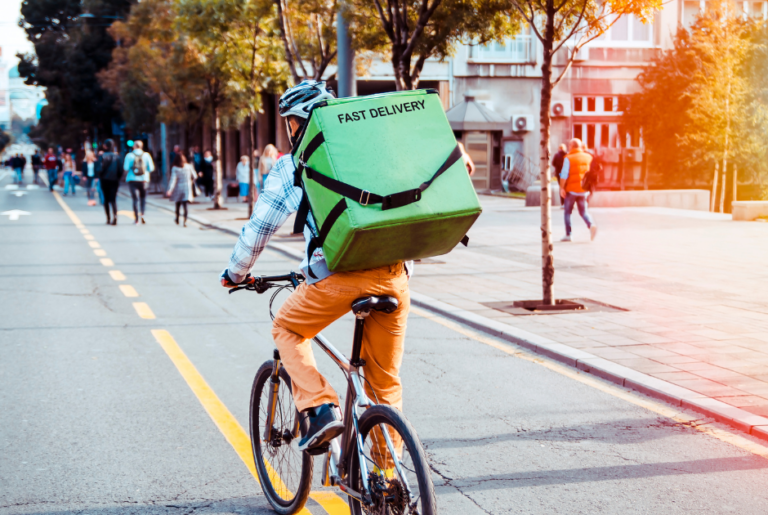
Deliveries have made it to the front and center of the modern shopping environment. The rise in eCommerce has led to a broad scope of changes in consumer lifestyle, including a larger variety of products that are available for purchase online, and a greater frequency of online orders as a result. With customers now ordering everyday necessities online, from groceries to medicine, it’s crucial for companies to have the infrastructure to provide excellent delivery experiences at every opportunity. As online shopping expands and there’s an increased focus on last-mile, the challenges are becoming apparent for retailers as they evaluate the most cost-effective solutions.
Challenge 1: Management
Managing a retail workforce is already a difficult task to be faced with; doing so while sustaining rampant online order growth with increasingly faster deliveries doesn’t make it easier. In order to deliver their products, companies need to balance between transportation, infrastructure, and an entire spectrum of labor roles that need to be facilitated. Requiring companies to continuously recruit, train, and retain extensive staff, this especially leads to management obstacles during peak service hours in which delivery associates must be trained for proper workload management and consistent service quality. Management further extends to inventory – a major pain point that retailers struggle with increasingly as deliveries become faster. Ensuring all items are kept up to standard, available in stock and ready for delivery requires an enormous list of tasks that are carried out with manual labor, from shelving and unshelving to packaging orders and preparing them for delivery. With greater speed requirements for order fulfillment and a growing range of tasks that need to be fulfilled, conducting operations manually is proving to be a particularly challenging initiative.
Challenge 2: Delivery Time
The one common goal all retail companies have is decreased delivery time. As the standard continues to shorten and more products are being offered online, retailers are constantly burdened with figuring out how to deliver more products in less time. While the different stages leading up to the item’s delivery hold their own set of difficulties, there’s a range of factors that influence a company’s ability to deliver products during the delivery itself.
Traffic plays one of the biggest roles in offsetting a company’s ability to deliver products promptly. Last-mile operations are demanding in highly populated areas and bigger cities – precisely where the majority of customers exist, and with the most traffic. To make matters tougher, standard delivery practices consist of using small vans or similar vehicles, which are most vulnerable to traffic and driving delays. As a result, companies spend considerable time designing delivery routes through cities; a complex task because the shortest driving routes are often the highest in traffic, creating a complicated trade-off between time and distance that influences cost and resource management.
Lastly, a largely influential factor in delivery speed when it comes to last-mile is location itself. In formulating optimal delivery routes through crowded areas using large vehicles to drive long delivery distances, the logistical weaknesses and operational gaps for retailers become apparent.
Challenge 3: Operational Costs
In order to facilitate last-mile deliveries, companies incur significant labor and operational costs to bring orders to our doorsteps. From employing large teams to perform the tasks in managing inventory and preparing orders for delivery, to owning and maintaining delivery vehicles and warehouses, and additional labor and fuel costs for delivering orders, expenses rise indefinitely with the continued growth of online shopping. In other words, the more customers order online, the harder it becomes for companies to keep up, and last-mile eats away at profitability.
How Can Companies Address These Challenges?
One of the fastest-growing methods companies are using in order to drastically optimize last-mile operations is through deploying fulfillment centers throughout and nearby cities. Small in size and high in volume, these nano fulfillment centers are emerging as what is perhaps the most effective way for companies to be close to their customers and shorten delivery time for orders.
Moreover, the key to deploying last-mile to its furthest capacity is by unleashing the power of automation. Over the years, fulfillment centers have become increasingly advanced, until reaching their current state in which the very peak of them are built to perform autonomous capabilities and replace the various manual tasks fulfilled by the workforce. With the ability to accept, prepare, and package online orders, automated fulfillment centers enable companies to significantly reduce costs associated with last-mile deliveries by decreasing their headcount to zero, or to smaller, leaner teams with collaborative retail automation. By replacing manual labor with automation, the latest fulfillment centers also allow companies to save time and position them to deliver orders rapidly. With lower costs, faster deliveries, and seamless operations that require incomparably less management, automated fulfillment centers make it possible for companies to alleviate many of the pains that come with last-mile operations.
Even more so, since fulfillment centers are placed throughout cities or near them, being as close as possible to customers, they make it possible for companies to use smaller and more economical delivery vehicles while utilizing shorter, optimized delivery routes. For the same reasons, companies can even partner with courier services to complete the shortened deliveries, some of which use bicycles as a primary delivery method, enabling them to bypass challenges with routing and density.
Automation: The Key Ingredient to Last-Mile Success
Having a strong, successful last-mile strategy is essential for companies who want to succeed in today’s market. Automated fulfillment centers enable companies to satisfy their customers consistently and keep up with consumer expectations while addressing many of their challenges and pain points that come with the ever-growing adoption of ecommerce. Enabling companies to simplify operations, save costs drastically, and deliver orders in just a few hours, automated fulfillment centers give them the tools to use last-mile as a significant advantage in the modern shopping environment.
